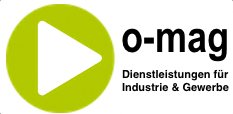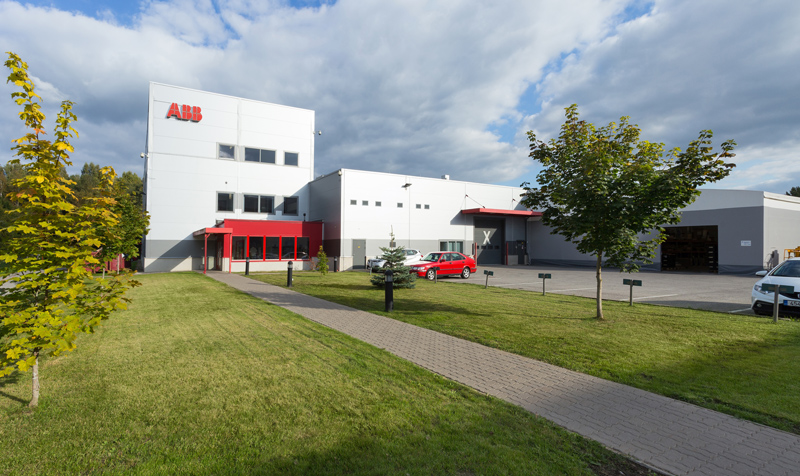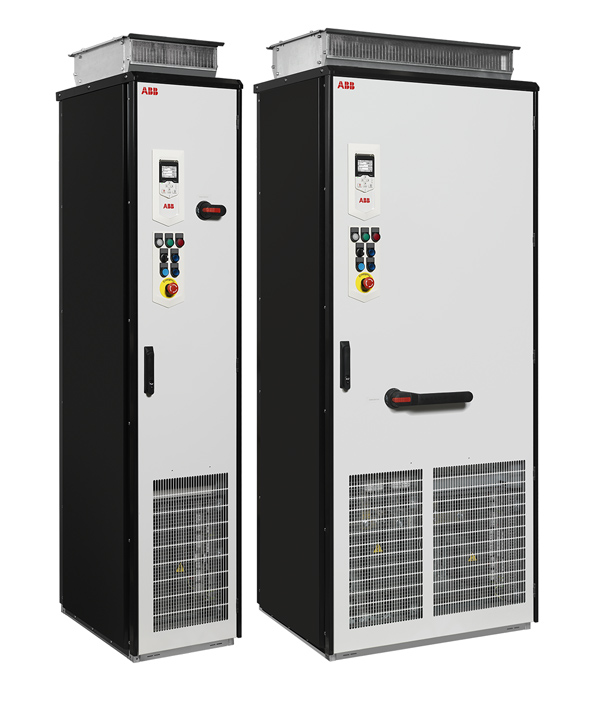ABB in Estonia
ABB started in Estonia in 1992. So it’s an old company according to Estonian short history after the independence. Nevertheless, conditions changed a lot during this time. When ABB started there were only some switchboards produced in Estonia. The factory for motors and generators started in 2002 and the drives factory in 2005. After that, ABB is one of the most important foreign factories in Estonia, employing more than 1300 workers and invested more than 100 million euros. o-mag had a brief interview with ABB drives and renewables factory lead Klaus Heiskanen. ABB in Estonia has no products which are produced exclusively in Estonia and nowhere else. But that corresponds to the global trend of the company – all products are produced at least at two different locations. So, drives and renewables control units are produced in different places in Finland, Estonia and in China. ABB does this to guarantee production in any situations: if one factory has any problems, another is still providing products for the customers. The Eestonian factory, located in ABB campus near Tallinn at Jüri, is very important for European market. Drives and renewables control units are produced here for European companies. Tallinn factory campus, where Drives & Renewables factory is located, is the fifth greatest factory of ABB by size. And for a 1,3 million citizens’ republic a company with 1300 employees is a relatively big enterprise too. Reminding the historyABB was formed in 1988, when two companies – ASEA from Sweden and Brown Boveri (BBC) from Switzerland joined together to build a new company, producing electrical equipment and automatics for industries. Both were best known names in European electrical engineering. The new company started to produce different products from turbines and railway engines to power and automation products. Products are used in food industry, ships, electric plants etc. ABB successfully designed and developed a hybrid DC breaker suitable for the creation of large inter-regional DC grids in 2012. This breakthrough solved a technical challenge that had been left unresolved for over a hundred years and was perhaps one of the main influencers in the 'war of currents'. In 2008, ABB was involved with building the longest submarine HVDC cable in the world at 580 km, what links the power networks of Norway and the Netherlands with a transmission capacity of 700 MW. DNAs of different companiesLater ABB integrated some companies for electric and automation engineering and became the biggest of its kind today. “There are DNAs of very different companies in ABB,” says Klaus Heiskanen, who a few months ago came from Finland to manage the Estonian factory. “ABB proved itself well in Sweden and Finland, so the company started to search new locations in Europe to produce effectively,” opens Heiskanen a list of reasons, why ABB choosed Estonia for new plants in the beginning of this century. It was important to produce near the European market and with great efficiency. At 2000 and few years later, Estonia was almost the ideal place: there were many good specialists, starting a factory was relatively cheap, and cost level of producing was very reasonable. After the 1990-ies, Estonia had many engineers with professional skills of electric products and automation, so ABB decided to open the new factories there. Even in 2005, when the drives and renewables factory was founded, it was very easy to find well educated workers for the production lines. Jüri is about 12 km from Tallinn, people are able to go to work from Estonian capital very easily and it was plenty of land to expand facilities. Meanwhile there are 400 employees in the factory on the ABB campus in Jüri, the factory has 5400 square meters of production area, 15 production lines, 2 shifts and 8 factory refills. The warehouse is outsourced to a regional logistics company that provides supplement to factory with eight trucks per day from nearby warehouses. There are always spare parts for two-day production, so any lack of details will not influence production for at least two days. Production of drives – for any imaginable industry areaThe ABB factory in Jüri produces drives for AC motors. The area of market is so huge that it's difficult to find any fields, where ABB products can´t be used. Maybe some specific areas with smaller equipment, but usually AC drives are used almost everywhere. Klaus Heiskanen explains: “Our products have all the same components. AC drives convert alternating current to direct current and then again to alternating current controlled by controller to reduce energy costs. By controlling the frequency, it is possible to control AC motors in a efficient way. Our other products have the same DNA: wind generators send out alternating current, what have to be stabilized. And solar panels send out direct current, what has to be converted to alternating current. All processes have the same components and we produce them all in our factory.” So, the Estonian factory is responsable for a wide range of new innovative products to control electrical motors, wind power stations and solar stations; for all of them similar components are required. ABB engineering in EstoniaIn Estonia, some engineering and factory planning processes are done by local engineers. The key points of Estonian factory are:
Klaus Heiskanen admits that there are no global contests of who is producing the best way, but you can say that ABB is certainly one of the best in the world. The agile factory with a high volume production of about 5000 switchboards and 30 000 modules per year is very competitive. Talking about engineers and research and development works in Estonia, Klaus Heiskanen explained there were 50 specialized engineers in the factory who are responsible for developing the production line. An operation excellence team is developing the factory production line effectiveness to new levels, a driver liability centre tests products to be sure that they last as expected. Drives on stress testThe most important parts of engineering in the Estonian factory are stress tests. Local engineers are testing drives and controllers in heavy conditions to find out, how long they can last. There are high load tests under extreme conditions: high temperature, vibration and humidity. If you put devices to such extreme working cycles, you can estimate, how long they will last in normal conditions. For example, if you test it with extreme loads, you can test only one month and then say, how well this equipment lasts under normal conditions in, for example, five years. There are several algorithms, to estimate the lifetime of components in normal conditions, if they survive some shorter time in extreme conditions. “We test our product components in heavy stress tests to be hundred percent sure that they last,” explains Heiskanen the R&D department’s importance. If some components fail, they will replaced by better ones. The R&D department also tests drives and controllers for electro-magnetic pulse, security of operation, durability and for accordance to European regulations. Swiss DNA in Estonian factoryAs ABB based on Swedish and Swiss factories, there is something typical for Swiss engineering in local factory, too: accuracy and effectiveness. To increase efficiency, the factory in Jüri uses energy from renewable resources on the roof – from solar panels. It is also a good place to test factory production live. At a dark rainy day in November, the solar plant on the roof produced only 1,5 kW of energy, but on sunny summer days it provides 20 kW and more. There are other examples of effectiveness, too. In drive tests, one motor runs the system and another breaks (to provide a load to testing unit), giving not used energy back to the system. Worldwide ABB drives are saving energy of ca 400 TWh year by year. Variable speed control saves energy and gives breaking energy back to the grid. On water pumps, a variable speed control saves about 50% energy. There are more examples of Swiss thinking in Estonian factory, too, to be more efficient, more accurate and to maintain high quality of production. How ABB drives are controlling orchestra of motors.
23.11.2015 | Autor
Kaido Einama
-> Drucken
|
MEHR ZU DIESEM THEMA
TOP ARTIKEL
TOP AKTUELLsoeben aufgeschaltet
MEIST GELESEN
|
||||||||||||||||||||||||||||||||
|
|
|||||||||||||||||||||||||||||||||
|
|
|||||||||||||||||||||||||||||||||



_800.jpg)



